Questioning the Identity and Exclusivity of the Mid-Century Worker through Herman Miller’s New Aesthetic
Justin Sorensen
In 1969, when discussing the American post-war corporate interior, designer and author John Pile remarked that “routine work is becoming truly mechanized, and the staff member, no longer a cog in the machine, is becoming a thinker.”1 Exploring this historical moment is critical to understanding the relationship established between labor and worker in the corporate environment of the time and the exclusivity of the new American “knowledge worker.”2 Earlier American managerial practices that imposed cubicles and repetitive labor had been replaced by a worker autonomy aided by less spatial constraints that aimed to spur creative thinking among a dominantly white population of American mid-century office workers.3 The furniture company Herman Miller was no stranger to designing corporate environments and was interested in evolving their brand to meet the needs of 1960s corporate America. In 1964, the Herman Miller Research Division released a line of desks and workspaces known as the Action Office. A highly conceptual and rather expensive set of office furniture plans, the first iteration of the Action Office had trouble selling to corporate clients, causing a split in the design team of George Nelson and Robert Propst. Propst subsequently followed up with a redesign of the Action Office system, simplifying its form and construction while addressing its cost and manufacturing time for greater appeal to corporate spatial planning departments. In 1968, he introduced the Action Office II. (Fig. 1) The system, a series of office space partitions, was marketed using language that emphasized customization (although typical arrangements by the Herman Miller Research Division tended to prescribe a honeycomb or hexagonal configuration).
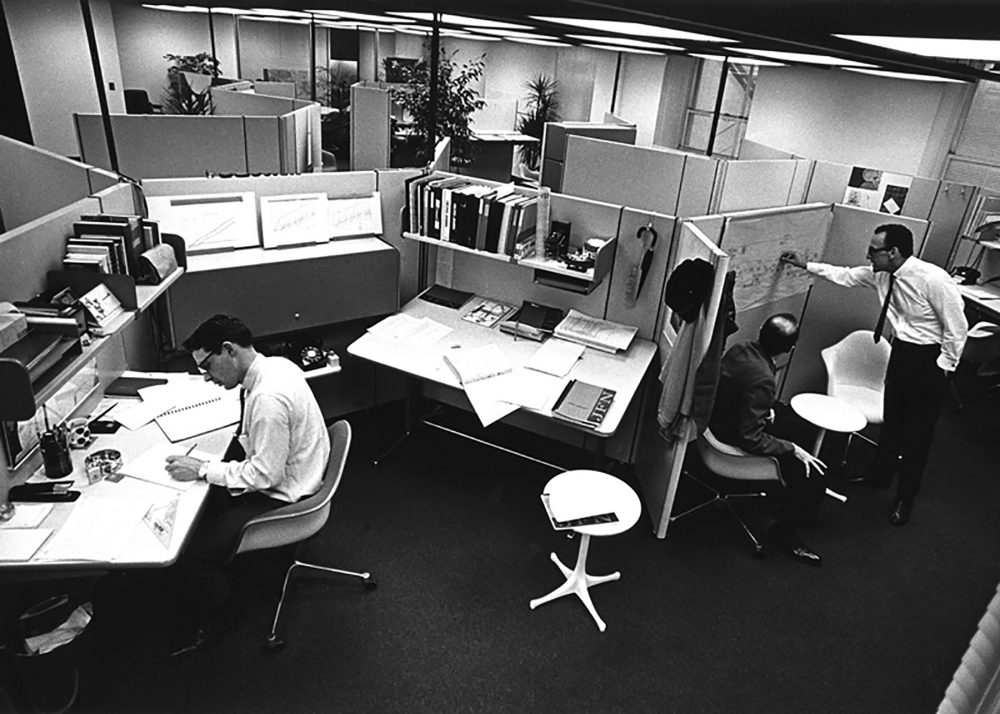
Figure 1. Workers “in action” in the Action Office II, 1968. Courtesy of Herman Miller Archives.
The Action Office II included multiple planes, which could be raised or lowered to accommodate desks at comfortable (more personalized) working heights. The system also included bookshelves, drawers, and cupboards designed to integrate the office and maintain an organized workspace. In addition to making the workspace portable, Propst’s modern cubicle capitalized on an American mid-century market mentality that sought a new identity and found comfort in Herman Miller’s language of data, ergonomics, and aesthetics as communicated to the public through the Action Office II advertising campaigns. The revised system gave white collar workers an illusion of workplace consistency despite their limited agency. In this sense, the Action Office II was a transitional object meant to alleviate the confusion of work within the changing structure of corporations in postwar America. Between 1964 and 1978, Robert Propst’s scientific approach to Herman Miller’s production (physical designs) and promotional strategies (product advertisements) for the Action Office solidified the system’s impact on the mid-century office interior. As post-war America progressed economically and socially from Taylorism to an advanced state of capitalism, the office interior became a site of aesthetic consumption. This new mode of existing at work can be understood through Bruno Latour’s “learning to be affected,” which explains that learned behavior is a product of environment and repetition.4 It is possible, through this lens, to consider the influence of the reductionist narratives of the Action Office II and how its effects were instrumental in reshaping the worker’s social identity.
Hyper-Rationalist Office Design of the Early 20th Century
In the early 20th century, the American corporate office operated under principles prescribed for the type of manual labor characteristic of blue-collar manufacturing where “maximum output meant efficiency, and efficiency was believed to be the engine of profit and progress.”5 This 19th century-style of labor management, known as Taylorism,6 was credited to Frederick Winslow Taylor, who stated that “all possible brain work should be removed from the shop and centered in the planning or laying-out department.”7 The modern interiors of corporations engaging in Taylorist management practices reflected an obsession with efficiency at the expense of style and reacted with indifference toward any sense of creativity by the worker. Every action the worker would take throughout the day was accounted for (including steps to the bathroom, the number of paper clips used, and the circulation of office papers between workers).8 This level of management left nothing to chance and delivered quantifiable results. Modern Taylorist interiors consisted of large, rectangular or square rooms featuring multiple rows of identical desks arranged in hierarchical order facilitating the passing of information on paper. These floorplans were not luxurious, as their main concern was with spatial “compactness.”9 The speedy workflow and efficient transference of information resembled an assembly line of papers moving from one desk to another to the extent that conveyor belts were a common feature in many offices.10 This management practice remained hyper-focused on the efficiency of each desk, requiring the person sitting at the desk to conduct the same mechanized daily tasks while allowing little room for error and absolutely no opportunities for creative input.
Individualism and the Capitalist Agenda
The zeitgeist of the 1950s was partially defined by opportunistic posturing in the workplace. The rapid rise of individualism was recognized as an attribute conducive to productivity, but it was also valued for the competition it could elicit among employees. During the Moscow Kitchen Debate between Richard Nixon and Nikita Khrushchev, Nixon remarked, “We do not claim to astonish the Russian people. We hope to show our diversity and right to choose,”11 postulating that the difference between “free” and communist societies was in this ability to make autonomous decisions.12 This ideological position of the individual was empirically manifest through artifacts such as the Action Office II. Once spatially arranged out of Taylorism, a reconsidered office would allow for a new dynamic between employee and corporation to proliferate through the workplace and satisfy the affective needs of a new type of worker. The introduction of the knowledge worker was understood in the dialectical relationship between Taylorist ideas of what qualified as “thinking” and what qualified as “doing.”13 In this case, valued as a monetary asset, “knowledge implies a new worldwide socioeconomic order in which its allocation will be the compass needle of social and economic development based on knowledge. This enables competitiveness to be improved and measured.”14
In his design of the Action Office II, Robert Propst focused exclusively on addressing the needs of the individual—the primary user of the new office system who would change and benefit from his design. Both Peter Drucker and Robert Propst (who was influenced by Drucker’s theories) could relate to knowledge workers.15, 16 Propst envisioned an environment within Herman Miller where ideas were greatly valued, and properly configured spaces were a requisite for future productivity. Although an ambitious—and perhaps idealized—vision of the role of the knowledge worker as the designer himself, this focus offers context and provides insight into the work Robert Propst conducted within the Herman Miller Research Division (HMRD), where he was asked to “diversify into other areas” (markets that existed outside of the domestic interior) and “search for the basic needs and solutions.”17
During the early years of the HMRD (1960-1968), Propst’s research projects were aimed at understanding the spatial environment and behavioral science of “human performers” (his word for knowledge workers).18 He set apart to distinguish himself from predecessors such as George Nelson (who focused on aesthetics at the expense of systems, communication and behavior) by instead approaching design from the perspective of complex problem solving.19 The habits and movements of human performers were tracked (not unlike the kind of observation under Taylorism) as data to establish a system that would free the worker from the oppression of the Taylorist office. Propst believed that the reduced dimensions of the workspace were the only limiting factor of the worker’s true potential, and by granting greater autonomy in workflow, time management, and spatial freedom, the worker would reach maximum efficiency to the benefit of the corporation at large.20 Propst’s Action Office II was centered around the individual, creating a command center where “a deluge of information” could be synthesized through a series of modular shelves, desks, chairs and panels.21 His vision for an office that could be configured and easily customized by the worker would allow the knowledge worker to achieve higher levels of thinking and creativity. (Fig. 2) This approach suggested a radical shift from the Taylorist belief that uniformity led to the highest level of efficiency. Propst’s approach was counterintuitive at the time, attempting to implode any sense of uniformity by proving multiple touchpoints for customization in the worker’s space. This translated to the worker feeling a greater sense of agency from their newfound responsibility and autonomy in relation to their space.22 The Action Office II communicated to workers that they were encouraged to think for themselves, and, ultimately, allowed to determine the best possible outcomes from their workspace. Propst’s idealized proposition remains common (and somewhat problematic) among designers today as it highlights an omnipotent trust in their role as providers of universal truths. Instilling this provocation into the psyche of the worker was an initial step in redefining and blurring the relationship between labor and the work environment.
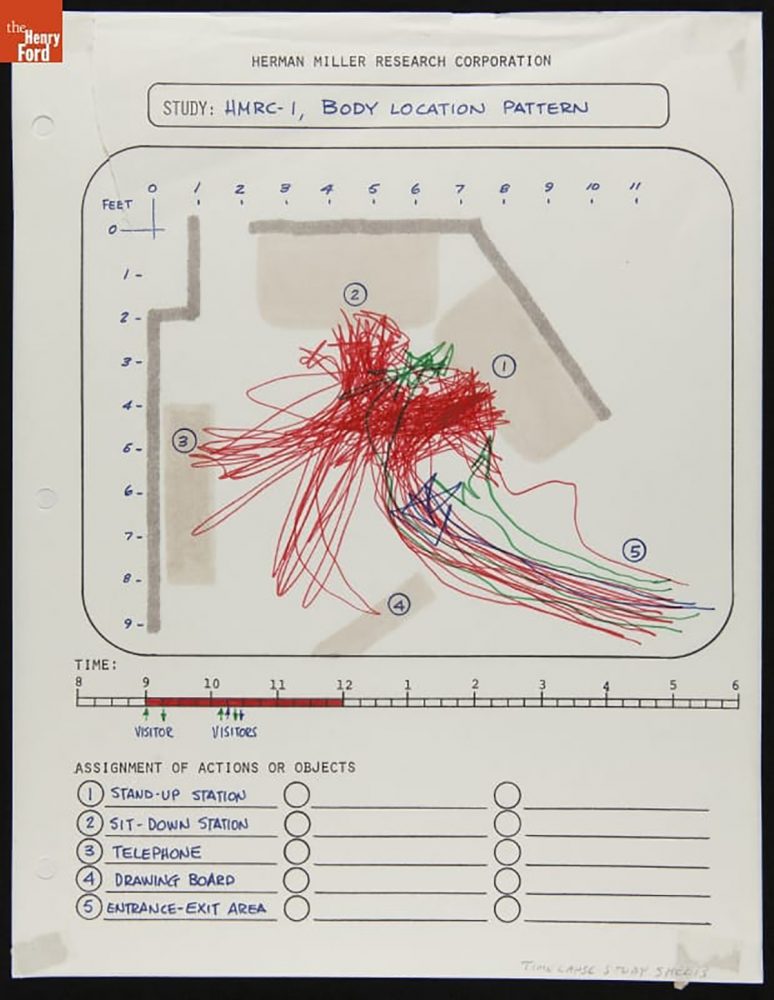
Figure 2.Time Lapse Study Sheet for Action Office System, “HMRC-1, Body Location Pattern.” From the Collection of the Henry Ford and a gift from the family of Robert L Propst. Courtesy of Herman Miller Research Corporation.
Blinded by Bias
Individualism at work was not an entirely new idea, but Propst’s time at the Herman Miller Research Division marked a shift from individualist work and turned the concerns over intellectual property toward a broader cultural pattern of labor. Because of this, it is important to examine the influence of the Action Office II within this cultural milieu and its effects on the workers’ awareness of themselves and the social dimensions of their identity.
Propst set out, by design, to subvert the notion of hierarchy in the workplace and free the worker from the regimented corporate organization. The archetypal post-war office (pre-dating the Action Office II) contributed to the creative stagnation of corporate America in the mid-20th century.23 It could be argued that Propst’s intention behind the Action Office II was morally sound as he was advocating for the humanistic integrity of workers. Propst’s research of design and behavioral sciences inspired him to eliminate all hierarchy within the corporate interior. In 1966, during a lecture, he remarked:
…offices as they are now are generally visualized reductive in expression. We have ascending levels of bosses, each with status reinforcement – in size, detail and accessories. Knowledge, judgement and responsibility are passed down and conventional design expresses this very explicitly.24
Without the visual cues of the former office hierarchy, Propst anticipated that the worker would be more capable (and willing) to focus on their work. However, the design in practice often left the worker lost, floating in a sea of hexagonal partitions lacking the familiar visual hierarchy of earlier systems. While the reorganization of the corporate office through the Action Office II system addressed the issue of proximity between workers who needed to share important information on a continual basis (through more social interactions than the aforementioned conveyor belt allowed), it did nothing to flatten the actual hierarchy of the corporation, and only complicated workers’ understanding of who was in charge. While top performers were easily recognized, the Action Office II simply replaced the outdated hierarchy of Taylorist management systems with a far more complex, cryptic, and powerful version reinforced by a dynamically evolving relationship to capitalism. The environments created with the furniture instead gave a false sense of autonomy. The Action Office II configuration made it easy to recognize an employee who was not working and, consequently, involved self-regulation as the convoluted hierarchy (or lack thereof) made it difficult to know who was under surveillance at any given time. This surveillance under the guise of creativity cemented a new relationship between worker, environment, and furniture.
Complicated Aesthetics
The interplay between aesthetics and ergonomics in the design of office furniture manifested well before the release of the Action Office II. However, as the high rate of new designs saturated the contract furniture market, Herman Miller witnessed an escalation of 10 to 50 million dollars in yearly revenue between 1964 and 1976.25 It is worth noting that businesses engaged in knowledge work were not fully staffed by knowledge workers. Nonetheless, the new office environments created by the Action Office II affected all types of American workers including those engaged in clerical, manual, and task-based work. Herman Miller furniture appealed to a culture where identity was increasingly dependent on employment. As companies became aware of their brand, interior design became part of the corporate identity that extended to the worker who spent more hours in the office.
A greater merging of the work environment with the worker’s identity can be acknowledged in Bruno Latour’s ideas on “learning to be affected.” This concept proposes that the body does not intuitively understand an environment but learns to navigate it by repetition and associations with the objects, places, or people that make a space.26 Herman Miller’s Action Office II furniture and interiors were unsettling at first. The new environments were more luxurious, introducing materials with soft, textured finishes, and adding occasional pops of color in the workstations. The worker’s control or autonomy in the Action Office II system reflected their role as a consumer in society, and more specifically, their aesthetics reflected those of middle-class consumer trends. The visual language used repeatedly throughout Herman Miller’s marketing of the Action Office II perpetuated the misguided idea of the knowledge worker as a white, middle-class man.27 The omission of women and people of color from the corporate marketing narrative of Herman Miller created divisions between the underrepresented and marginalized workers, implicitly excluding them from the emerging knowledge workforce.
Propst’s utopian vision centered on workers who needed to be freed from the burdens of Taylorist practices. This bias left less educated men, women, and people of color relegated to some form of manual or repetitive labor that made it even more complicated for them to spatially orient themselves in the Taylorist office. The commodification of the new corporate interior and the touting of middle-class consumerist values precipitated a new myth within capitalist ideologies that were pushing toward a more advanced state and referencing a rapidly expanding market of consumption by the middle class. Racial and gendered inequalities created layers of stratification furthering a divide within the workplace that defined an unfortunately narrow understanding of success and failure.
An Exclusionist Marketing Platform
While the conceptual and physical design of the Action Office II certainly contributed to the issues of identity in the worker, perhaps nothing did more to perpetuate this behavior than advertising from Herman Miller. to perpetuate this behavior than advertising from Herman Miller. The visual imagery and language employed throughout marketing campaigns promoted an ideal model of how work was to be performed, and who (encouraged by the Action Office II) was to do this the type of work. The language used within Robert Propst’s design process points specifically to the white, middle-class man. Given the environment of post-war America and the economic boom of the middle class, a marketing structure aimed at exploiting this specific demographic was foreseeable.
Using Latour’s theory on the body as “an interface that becomes more and more describable as it learns to be affected by more and more elements,” we can begin to understand why the exclusion of these underrepresented groups from the corporate narrative would perpetuate a predominantly white corporate culture.28 Latour points out that, “a subject only becomes interesting, deep, profound, worthwhile when it resonates with others, is effected, moved, put into motion by new entities whose differences are registered in new and unexpected ways.”29
Advertisements and catalogues produced by Herman Miller for the Action Office II system explicitly highlighted gendered relationships within the office. White men were depicted as the bearers of knowledge, shown sprawling over the space, teaching, pointing, instructing, and confidently executing in a position of power in the office environs. Some images included white women, but they appear relegated to the subservient clerical role of office assistant or secretary. (Fig. 3) This exploitive representation of gendered roles signaled limited possibilities for women and other underrepresented groups within this corporate milieu. In promotional photos, women served more as colorful accessories like the pops of color on the furniture system itself. The absence of more diverse racial and ethnic groups was evident in Herman Miller’s corporate marketing although the occasional non-white worker might be featured. Due to the suggested hierarchy of power, this individual was inevitably relegated to the role of other and spotlighted for this difference in the given scenario. (Fig. 4) According to Kristina Wilson, “race was used within these images as props and to accessorize the room.”30 Wilson describes how the Herman Miller publicity devices “placed the products in various narratives where relative power, ownership and difference could be symbolically inferred. The narratives forged gendered identities and racial whiteness for the products.”31 In this deficient depiction of race and gender in the workplace, Herman Miller was responsible for perpetuating a systemic exclusion of people in determining who was capable (or worthy) of knowledge work.
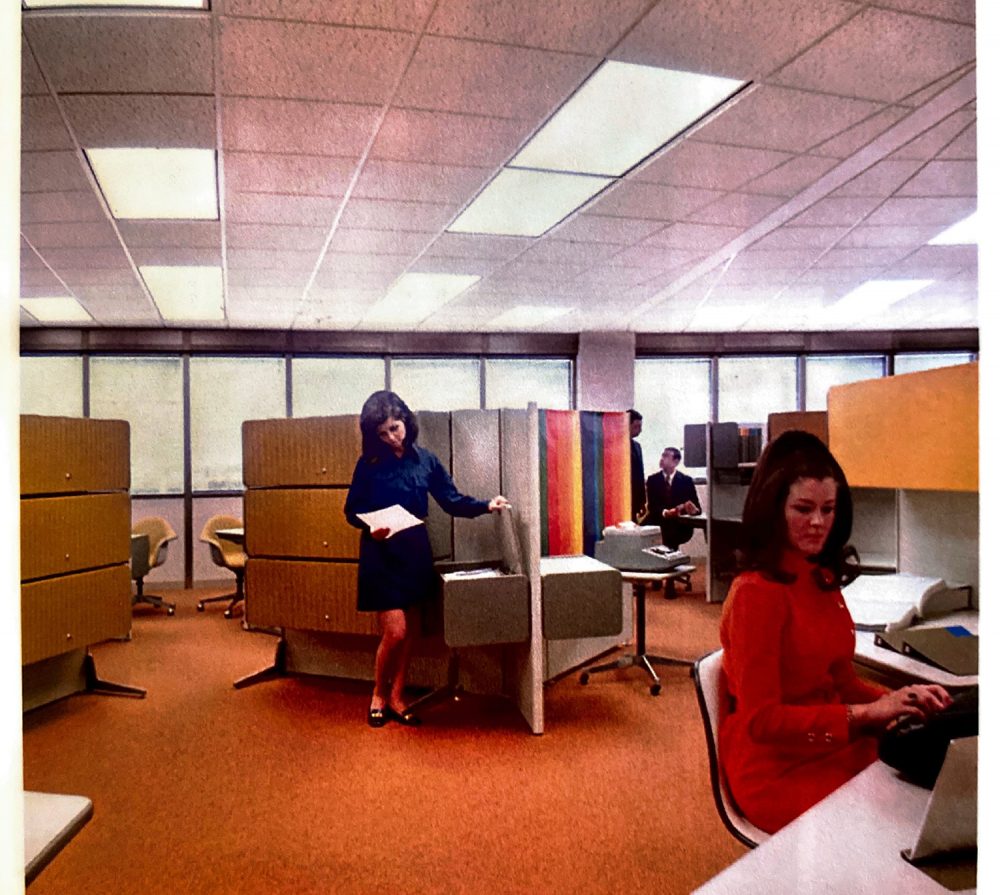
Figure 3. Action Office II installation at Citizens & Southern National Bank, Atlanta Georgia, 1968.
Courtesy of Herman Miller Archives.
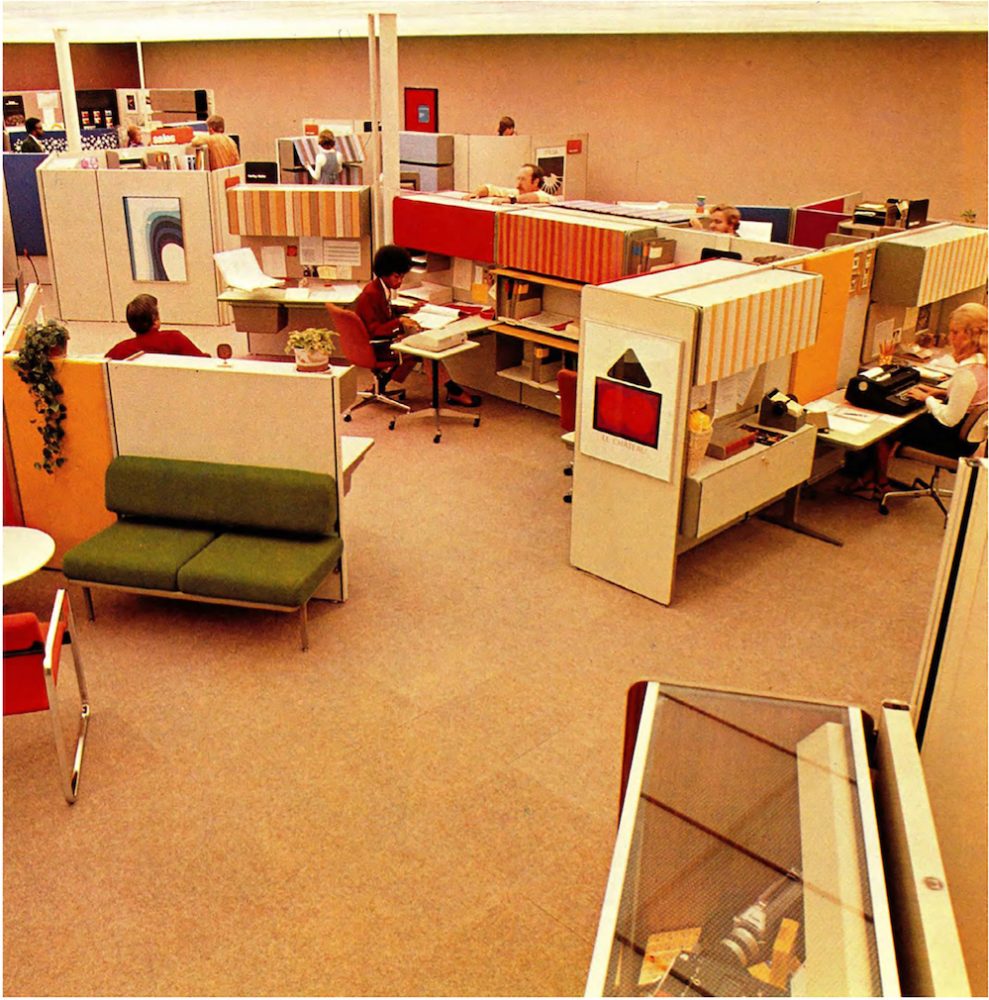
Figure 4. An Action Office II installation used in Herman Miller advertising, 1975. Courtesy of Herman Miller Archives.
Blurring the Boundaries of the Domestic and Corporate Interior
Knowledge work was important, but it was equally important for Herman Miller to show how attractive this new way of working could be. Certain tasks could be shown taking place in an interior that provided a comfortable environment for the worker that blurred the lines between home and office. One such example is the sleeping mat, a prototype for a product never fully realized. (Fig. 5) Designed by Propst for the original Action Office, the sleeping mat helped the worker settle comfortably into the system as a new home. Repeated exposure to this new aesthetic continued to blur the boundaries between workplace identity, comfort, and purpose. The reductionist views of Herman Miller can also be recognized in the brochures produced by the Propst Planning Team in 1978. (Fig. 6) The Action Office II was said to improve the well-being of the employee and the company. However, there is a contradiction of sorts that can be attributed to Karl Marx’s theory of “labor power” that helps us understand the way work is bought and sold. Labor as a commodity is purchased by the capitalist, and subsequently this labor generates tangible products, which in turn are then sold at a value exponentially larger than the originally purchased labor to great profit for the original capitalist.32 In this assessment of capitalism, the laborer cannot afford the opportunity to accumulate the same financial wealth as the capitalist, and the system will continue to profit the capitalist disproportionately. If the Action Office II were to proportionally benefit both worker and employer (or capitalist), then the value being added to the worker must reside outside of monetary value. Herman Miller’s Action Office II advertising promoted a level of comfort for the worker, however this comfort revealed itself to be exploitative as the blurred boundaries of work and home confounded the worker’s sense of self and belonging to the corporation. If knowledge (as commodity) is produced at work and the company owns this knowledge, how did it affect the workers previous attachment and sense of individuality? This confusing relationship succeeded in increased efficiency and generating profits for many businesses.

Figure 5. Robert Propst demonstrates an “unembarrassed nap” on a sleeping mat designed for the original Action Office, 1964. Courtesy of Herman Miller Archives.
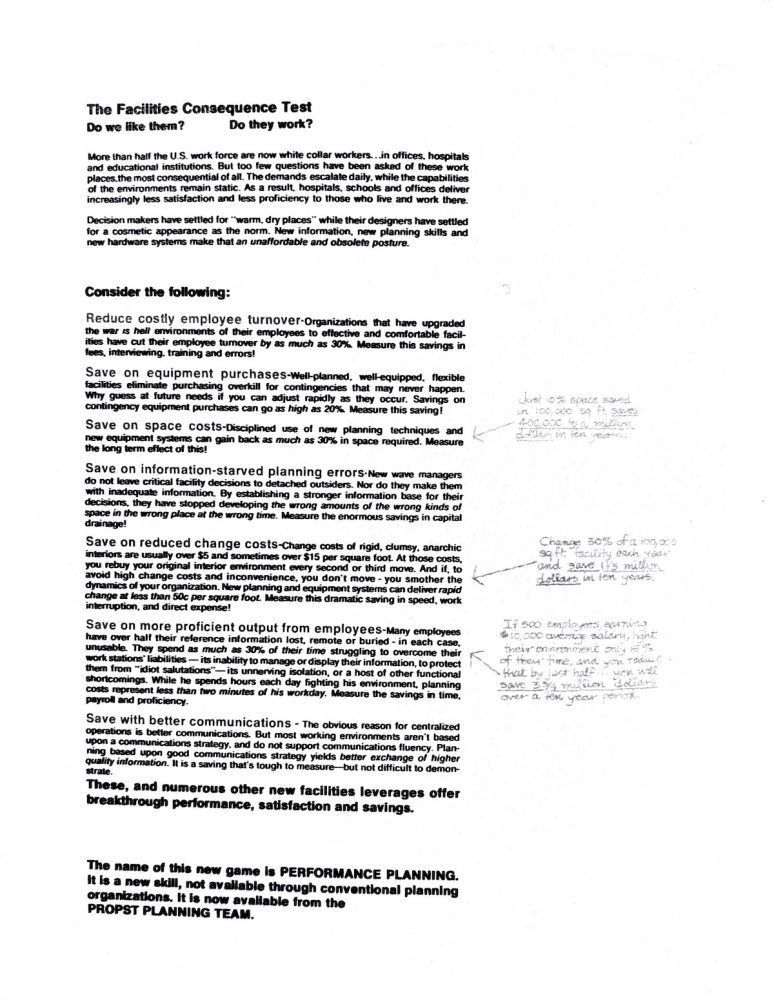
Figure 6. Propst Planning Team Brochure Excerpts, 1978. Courtesy of Herman Miller Archives.
Conclusion
Post-war corporate interiors evolved both in physical and managerial expressions of space and the people occupying it. The changes happening around the culture of work necessitated furniture that trained workers to work differently to produce knowledge for the company to generate profit. Aesthetics were weaponized against workers, creating a landscape where work was confounded with ideas of home, and where inequities continued to surface. As the United States moved toward late capitalism, Herman Miller’s Action Office II provided the very physical expression of this private, for-profit system which helped corporations further exploit its white-collar labor force. By providing a blueprint expressed through the system’s ideology, research-backed design, and visual language, Herman Miller gave users of its office system a guide for demarcating gendered and racial roles to support their design. The system of operations should be considered for its role in complicating the understanding of what work is to the worker. Ambiguous by design and meant to challenge the boundaries of the white-collar corporate office, the Action Office II promoted a foundational exclusivity that has since been solidified and continues to impact the workplace today.
Acknowledgements
I would like to thank Professor Claudia Marina for her encouragement throughout the writing and research of this article. I would additionally be remiss if I didn’t graciously thank Diana Duque for her diligent and thoughtful suggestions when revising and editing this work.
Endnotes
1. John Pile, “The Nature of Office Landscape,” AIA Journal (July 1969): 46.↵
2. The term “knowledge worker” was coined and popularized by Peter Drucker in Landmarks of Tomorrow (New York: Harper, 1959) and was used by Drucker in many subsequent theories.↵
3. Using US Census data from 1970, the research of Angela Byars-Winston, Nadya Fouad, and Yao Wen, states that 88% of office work was conducted by white workers. Angela Byars-Winston, Nadya Fouad, and Yao Wen, “Race/Ethnicity and Sex in US occupations, 1970–2010: Implications for Research, Practice, and Policy,” Journal of Vocational Behavior 87 (2014): 54–70.↵
4. Bruno Latour, “How to Talk About the Body? The Normative Dimension of Science Studies,” Body and Society 10, no. 2-3 (2016): 209.↵
5. Ronn Daniel, “Taylorizing the Modern Interior: Counter Origins,” in The Handbook of Interior Design, eds. Jo Ann Asher Thompson and Nancy H Blossom, (Oxford, UK: John Wiley & Sons, 2014), 60.↵
6. Daniel, “Taylorizing,” 59.↵
7. Frederick W. Taylor, Shop Management (New York: American Society of Mechanical Engineers, 1903), 47.↵
8. Daniel, “Taylorizing,” 62–63.↵
9. Ibid, 62.↵
10. Ibid.↵
11. Richard Nixon and Nikita Khrushchev, “The Kitchen Debate,” in The Industrial Design Reader, ed. Carma Gorman (New York: Allworth Press, 2004), 174.↵
12. Ronn Daniel, “Herman Miller’s Action Office: Corporate Interiors in the Cold War,” Interiors 6, no. 1 (2015): 15.↵
13. Kelvin Kelloway and Julian Barling, “Knowledge Work as Organizational Behavior,” International Journal of Management Reviews 2 (2000): 290.↵
14. Alvaro Turriago-Hoyos, Ulf Thoene, and Surendra Arjoon, “Knowledge Workers and the Virtues in Peter Drucker’s Management Theory,” SAGE Open (2016): 3.↵
15. Ibid.↵
16. Daniel, “Herman Miller’s Action Office,” 11.↵
17. Ralph Caplan, The Design of Herman Miller (New York: Whitney Library of Design, 1976), 340.↵
18. Ibid, 328.↵
19. Robert Propst,“Draft of Lecture, ‘The Influence of Behavioral Science on Design,’ by Robert L. Propst, 1966,” The Henry Ford Museum of American Innovation, Digital Collections, September 29, 1966, https://www.thehenryford.org/collections-and-research/digital-collections/artifact/452246.↵
20. Jennifer Kaufmann-Buhler, “Progressive Partitions: The Promises and Problems of the American Open Plan Office,” Design and Culture 8, no. 2 (2016): 213.↵
21. Daniel, “Herman Miller’s Action Office,” 11.↵
22. Kaufmann-Buhler, “Progressive Partitions,” 213.↵
23. Ibid, 208.↵
24. Propst, “Draft of Lecture,” 4.↵
25. Caplan, Herman Miller, 330.↵
26. Latour, “How to Talk about the Body,” 206.↵
27. Propst, “Draft of Lecture,” 9.↵
28. Latour, “How to Talk about the Body,” 206.↵
29. Ibid, 210.↵
30. Kristina Wilson, “Like a Girl in a Bikini Suit and Other Stories: The Herman Miller Furniture Company, Gender and Race at Mid Century,” Journal of Design History, Vol. 28, Issue 2 (2015): 174, https://doi.org/10.1093/jdh/epv006.↵
31. Wilson, “Like a Girl,” 168.↵
32. Karl Marx, Das Kapital (Moscow: Progress Publishers, 1867), Vol. 1: 197.↵
Author Affiliations
Justin Sorensen is a graduate student in the MFA Interior Design program at Parsons School of Design, The New School.

 DESIGN STUDIES BLOG
DESIGN STUDIES BLOG

